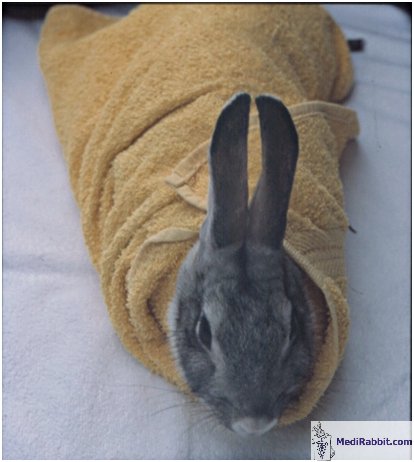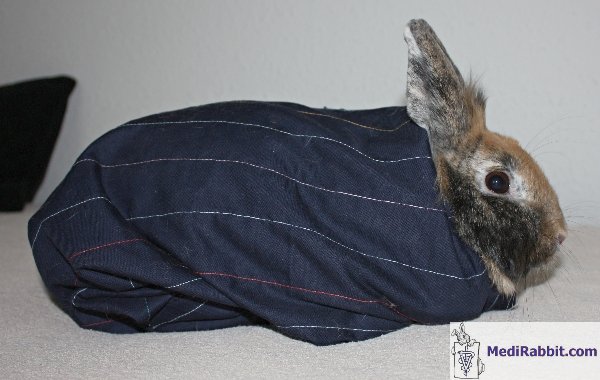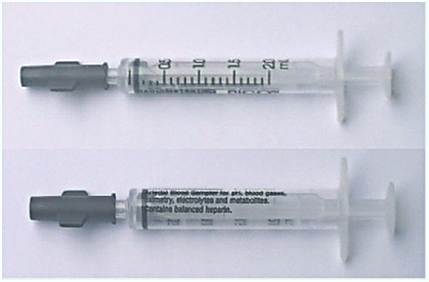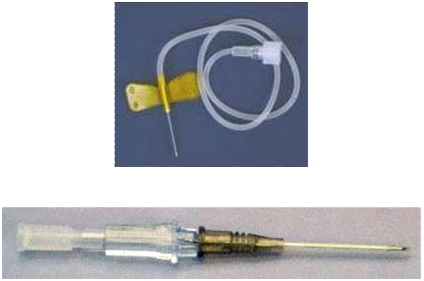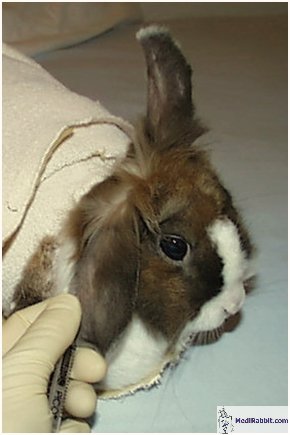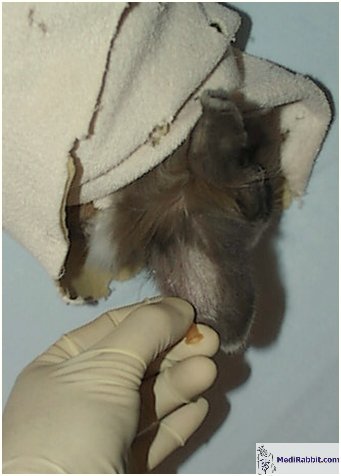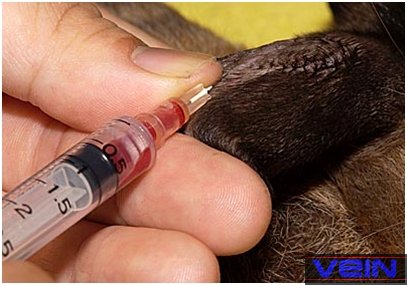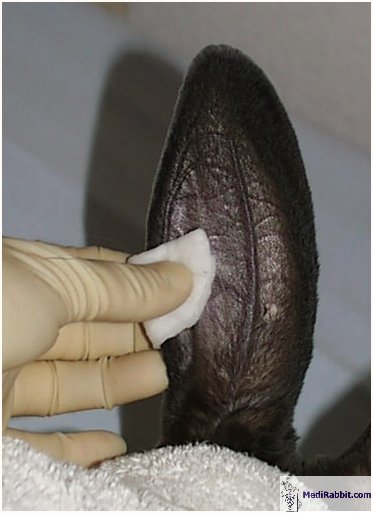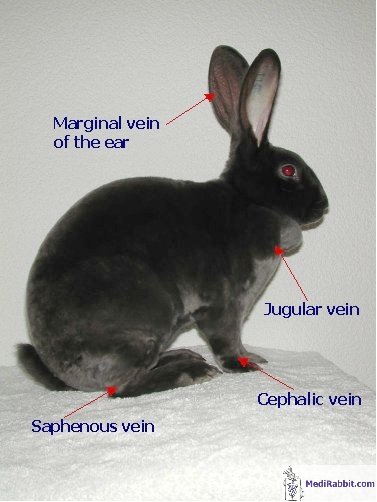Phlebotomy
(blood drawing) in a rabbit
Esther van Praag, Ph.D.
MediRabbit.com is funded solely by the
generosity of donors.
Every donation, no matter what
the size, is appreciated and will aid in the continuing research of medical care
and health of rabbits.
Thank you
|
Warning: this file
contains pictures that may be distressing for people.
Rabbits are easily startled and may start
scratching the manipulating person or jump from the examination table during
the clinical examination or a blood sample. They often jerk in response to
venipuncture in the marginal vein of the ear, when the skin has not been
anesthetized beforehand. As a result, rabbits should therefore be restrained
in a towel, bag or laboratory coat.
For a pictorial demonstration of restraint in a towel, see: Safe immobilization of
a rabbit in a towel (“rabbit burrito”)
The amount of blood needed for a blood test will
determine the location where the sampling will be done. Veins are used
(venipuncture (blood from the vein is used), some rare tests nevertheless
require blood from the artery. Arteries, should, however, be avoided as this
procedure is painful and can lead to damage and necrosis of the arterial
vessel.
Amounts up to 5 ml of blood can be safely drawn from the auricular
marginal vein, using a 23- to 25-gauge needle or a 23-gauge butterfly
attached to a syringe or tube. It is also possible to place a
catheter-over-needle.
The preparation of the skin is identical, independent of the
collection method used. Before starting the sampling, the fur on the ear is
shaved, and the skin is cleaned with alcohol. As the skin on the ear is very
sensitive it is recommended to anesthetize the skin locally with e.g. a lidocain containing cream (e.g. EMLA®).
The creamed spot is wrapped with a plastic sheet and a protective
adhesive bandage. After 45 min., the full thickness of the skin is numb. The
anesthetic effect remains effective for the next 60 min.
Dilation of the vessel can be obtained by massage of the ear,
approach of a heat source near the rabbit ear or by using blood vessel
dilating agents, e.g. acetylpromazine (0.25 ml,
SC).
After occlusion of the vein, the needle is carefully inserted and
blood can be withdrawn. The procedure must be done slowly, in order to avoid
hemolysis of the red blood cells (erythrocates),
but should be fast enough to avoid the formation of blood clots. After
removal of the needle, a cotton gauze is firmly
applied on the site of venipuncture, during at least 1 minute, or until
bleeding has stopped, in order to prevent the formation of hematomas and
blood clots. The use of alcohol-impregnated gauze should be avoided; alcohol causess vasodilatation and prevents hemostasis.
Stain of blood on the ear can be removed with hydrogen peroxide
The rabbit should remain under observation over the next hours to
ensure that hemostasis is complete.
The jugular vein can be used to collect a fairly
big amount of blood. The dewlap of female rabbits does not represent a
hindrance. The rabbit can be placed in several positions, in order to collect
blood from the jugular vein:
- sternal recumbency, with the
neck extended upwards and the front limbs hanging over the end of the
examination table;
- dorsal recumbency, after safely
restraining the rabbit in a towel, and extending the neck in order to expose
the jugular vein;
- lateral recumbency, with the
neck extended out and the front legs pulled downward.
The jugular vein should be avoided for blood
collection if the rabbit suffers from a respiratory problem or shows
respiratory distress. It may become cyanotic during the procedure.
Alternate sites for blood collection are the
cephalic and the lateral saphenous veins. Their locations are the same as in
dogs and cats. These veins are fragile, and a hematoma is easily formed.
Collection of blood from the central artery must be avoided, unless
higher volumes of blood need to be collected. This site is painful and often
leads to subsequent distal ischemia, due to impairment of blood supply to the
pinna after the formation of a hematoma or due to blood vessel damage
(arterial trauma with thrombosis). A collapse of the vessel may, furthermore,
occur when excessive pressure is exerted. If the use of the central artery
cannot be avoided, the 21-gauge needle should be inserted as distally (tip of
the ear) as possible into the artery. The blood should start to flow
immediately in the syringe.
Complete blood count
and biochemistry reference values in rabbits
Acknowledgement
Thanks are due to Akira Yamanouchi (Veterinary Exotic Information Network), for the
permission to his photograph.
Thanks are also due to my rabbits Grijsje, Flora
and Stampi, for their patience.
Further information
Mc Guill, M.W. and Rowan, A.N. (1989) Biological effects of
blood loss: implications for sampling volumes and techniques. ILAR NEWS 31,
No. 4, 5-18.
Exotic
Companion Medicine Handbook for Veterinarians, Cathy Johnson-Delaney and
Linda Harrison
Mader DR. Rabbits - basic approach to veterinary care.
In: Hillyer EV, Quesenberry
KE (eds.): Ferrets, Rabbits, and Rodents - Clinical Medicine and Surgery. Philadelphia, WB Saunders, 1997: 160-168.
Paul-Murphy J, Ramer JC. Urgent care of the pet
rabbit. In: Rupley AE (ed.): Vet Clin North Am (Exotic Anim Pract). Philadelphia, WB
Saunders, 1998: 127-152.
|
|||||||||||
e-mail: info@medirabbit.com



